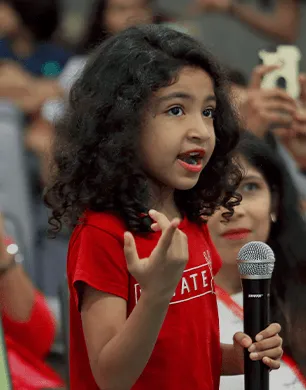Now Battling Diarrhoea Is Easy With Enterogermina
Heer has a love-hate relationship with her school. She loves going to school and wouldn’t want to miss it even for a day but hates waking up at dawn to be in school by 7:30 am. We love her summer holidays; however, over the years I have experienced that summers lower Heer’s immunity and she suffers from health issues like dehydration and diarrhoea. Though most of the conditions are easy to manage at home, managing and treating Diarrhoea is challenging. I've noticed that during diarrhoea as her little body defends to flush out the bacteria, it loses body fluid, electrolytes, and nutrients, making her vulnerable and weak.
I've recently read that every year there are over 1.7 billion cases of diarrhoea globally, of which 1.3 billion people succumb to the disease. The statistic is scary, and it can be changed with a little bit of information about the condition. That’s the thought team Enterogermina had when they planned the #HappyTummiesMeet in Mumbai with parenting bloggers.
The focus of the Enterogermina meet was to help mothers understand how to manage diarrhoea and put the word out to educate other parents about the causes, treatment and prevention. As the event progressed, I learnt numerous little details about diarrhoea from a leading paediatrician from Mumbai and I’m sharing them with you.
What is diarrhoea?
The child's digestive system is sensitive to dietary changes and when unfamiliar substances enter the body, digestive problems occur, the most common of which is diarrhoea, which is an infection in the intestinal tract.It results in loose or watery stools that occur frequently and are accompanied by stomach ache, fever, headache, nausea and loss of appetite.

What are the common forms of diarrhoea?
Diarrhoea can either be viral or bacterial. Viral diarrhoea or stomach flu is very common and runs itself out in a couple of days. However, bacterial diarrhoea is caused by consumption of food or water that has become contaminated with bacteria or toxins.
How to manage and treat diarrhoea?
Since diarrhoea in a child causes rapid dehydration, it is important to keep her hydrated, by constantly offering plenty of fluids, including water, fresh fruit juices, broths and soups. It is also advisable to give the child a probiotic like Enterogermina to help balance the good and bad bacteria for quick recovery.
When to visit the doctor for diarrhoea?
Most times, diarrhoea in children can be treated with home remedies and Enterogermina, Paediatrician's No.1 choice. However, if the condition lasts for more than two days it is advisable to seek medical attention. Also, if the child has severe abdominal pain, a fever of 102°F or higher, rush to the doctor immediately.
One of the best parts of the meet was the Good Food-Bad Food activity organized for the children, in which they participated with gusto. Heer was the most curious child at the meet, asking many questions and getting her food queries resolved. As we headed home, I knew I had to make Enterogermina a part of my children's daily routine for #HappyTummies. I’m always keen to incorporate new things to keep my children healthy and germ-bacteria free.
Content Courtesy : Heena Shah-Dhedhi, www.icynosure.in
.webp)
